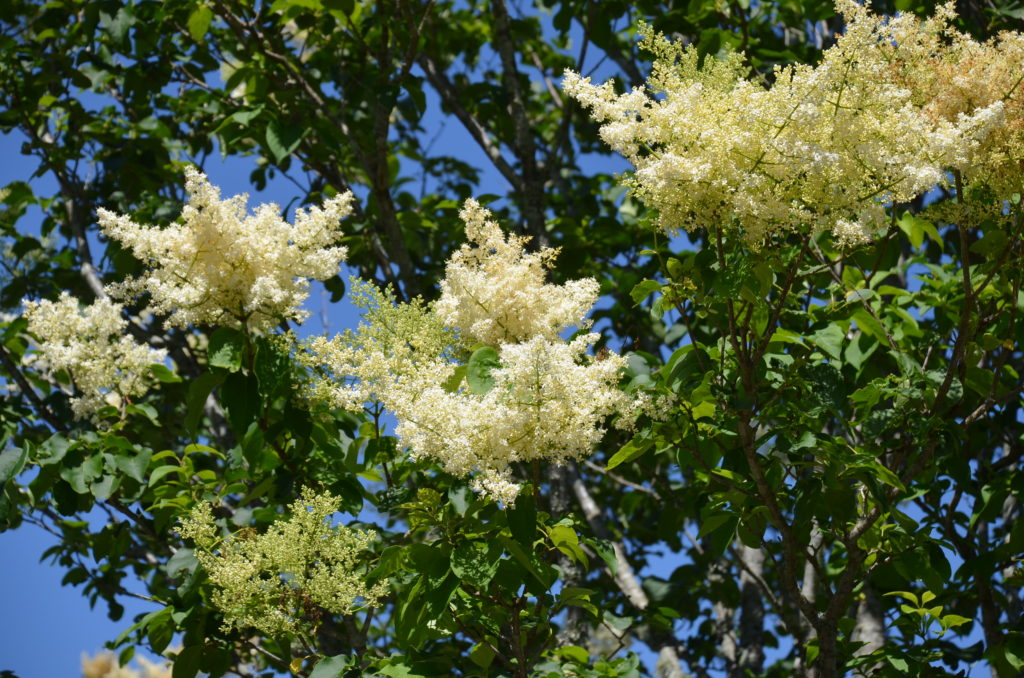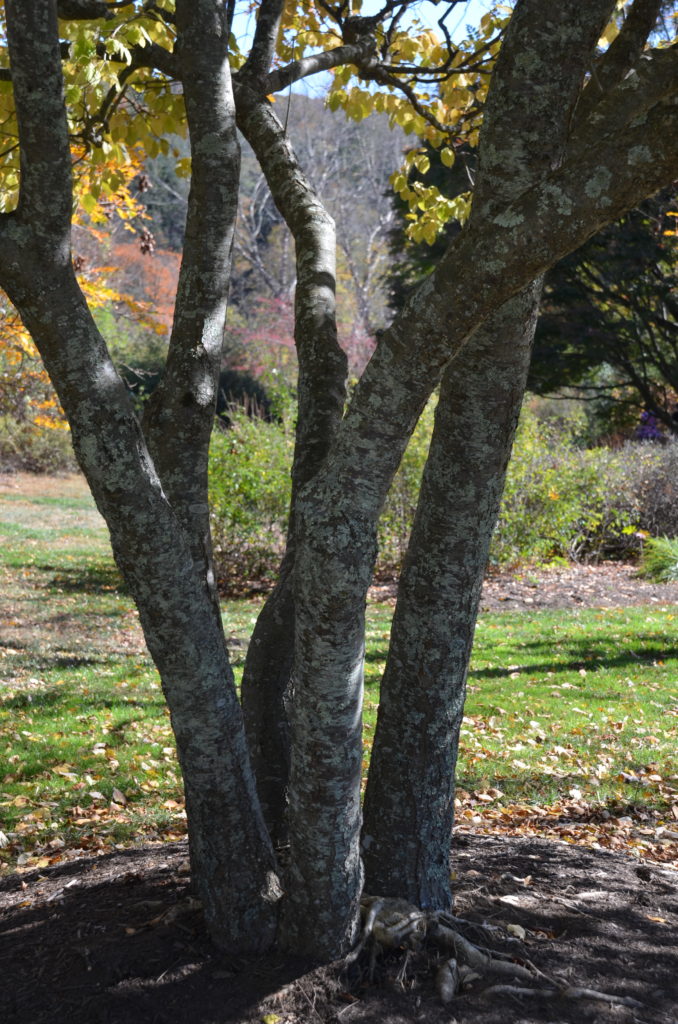
Chinese tree lilac (Syringa reticulata) is an under-planted small multi-trunked tree or large flowering shrub (USDA hardiness zones 3-7). In tree form, it grows 20- 30 feet tall and 15- 20 feet wide with a rounded crown. Mature 70 year old plus specimens at Biltmore Estates in Asheville, NC are 50 feet or taller.
Its singular greatest asset is the showy clusters of fragrant, creamy white flowers. Upright bloom panicles, 9-12 inch long, appear in late spring to early summer (later than most other lilac species). In cooler northern locales flowering may last over 2 weeks. The pointed-tip lanceolate to ovate, dark green 5-6 inch long leaves emerge before June flowering. Fall color is non-existent.
A member of the Oleraceae family, which includes the troubled ash trees (Fraxinus spp.) and privets (Ligustrum spp.), their flowers are mildly fragrant. You will either like or not the privet-like scent. Flowers give way to loose clusters of brown capsules that persist into winter. Reddish-brown peeling bark is attractive on young branches, gradually turning gray with age. Following a rain event, their dark cherry-red colored bark is more intense when wet.
Tree lilac grows in average, medium moisture, well-drained soil in full sun. The tree blooms heaviest in full sun and should never be crowded in among taller plants. It handles inner city environmental conditions well. Prune the tree (if needed) within one month after flowering. Tree growth thrives where summers are cool and rainfall is plentiful. Tree lilac struggles if planted south of USDA Zone 7.

No serious insect/ diseases trouble tree lilac. It is deer tolerant in most locales. Compared to other Syringa species, tree lilac exhibits better resistance to these major pests of lilacs – powdery mildew, scale and borers. Flower buds are susceptible to late spring frost injury. Blooms attract butterflies and other pollinators plus an occasional hummingbird or two.
Leading Cultivar: ‘Ivory Silk’ forms a sturdy compact small 20-25 foot tree or large shrub with a rounded crown. It tends to bloom at an early age.
Landscape Use: as a single specimen, a street or lawn tree, or in multiples as a property screen.

 Posted in
Posted in 
